When you're in the trenches, knowing military slang for location is key to success and safety. You'll need to pinpoint your position using grid coordinates, direction, and azimuths. Clear communication is essential, so you'll use terms like 'left flank' and 'northbound' to direct your team. Understanding location references, like terrain association and distance estimation, will get you to your destination efficiently. And, when setting up base, you'll need secure protocols and operational security. Grasping these concepts will get you started, but there's more to master to stay on target.
Grid Coordinates Explained
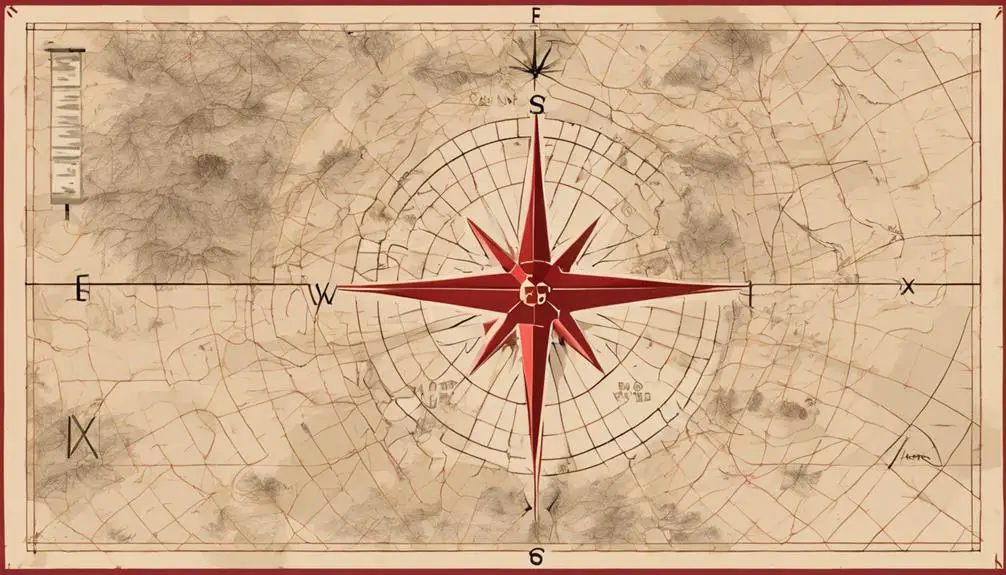
When you're moving around in the field, you'll often rely on grid coordinates to pinpoint your location. Grid reference systems, like the Universal Transverse Mercator (UTM) system, provide a way to identify specific points on a map. These systems divide the Earth's surface into a grid of squares, allowing you to pinpoint your location using a set of coordinates.
To convert between different grid reference systems, you'll need to use coordinate conversion methods. For example, you might need to convert from UTM coordinates to latitude and longitude. Understanding how to do this is critical, as different systems use different formats to represent coordinates.
In the field, you'll need to be able to quickly and accurately convert between different coordinate systems. This might involve using conversion tools, like a GPS device or a map protractor, or doing the calculations manually. Regardless of the method, it's vital to be proficient in coordinate conversion to make sure you can accurately communicate your location to others.
Directional Terms for Movement
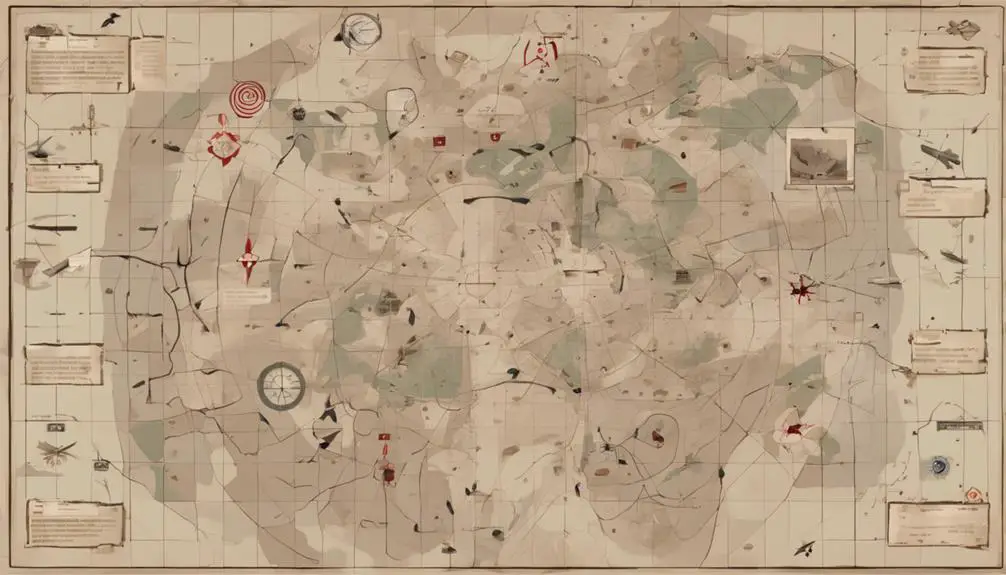
As you navigate through unfamiliar terrain, understanding directional terms for movement is essential to communicating your intended path and avoiding confusion. When giving or receiving directions, it's vital to use precise language to make sure everyone's on the same page.
In military contexts, directional terms like 'left flank' or 'right flank' indicate the direction of movement relative to your current position. This is particularly important when executing flanking maneuvers, where a unit moves around the enemy's side or rear to gain a tactical advantage.
When calling out directions, you'll often use terms like 'northbound' or 'eastbound' to indicate the direction of movement. You might also use 'rally points' to designate a meeting spot for regrouping or reorganizing. By using these directional terms correctly, you can guarantee that your team moves efficiently and effectively, even in the most challenging environments. Remember, clear communication is key to success in military operations.
Azimuth and Back Azimuth
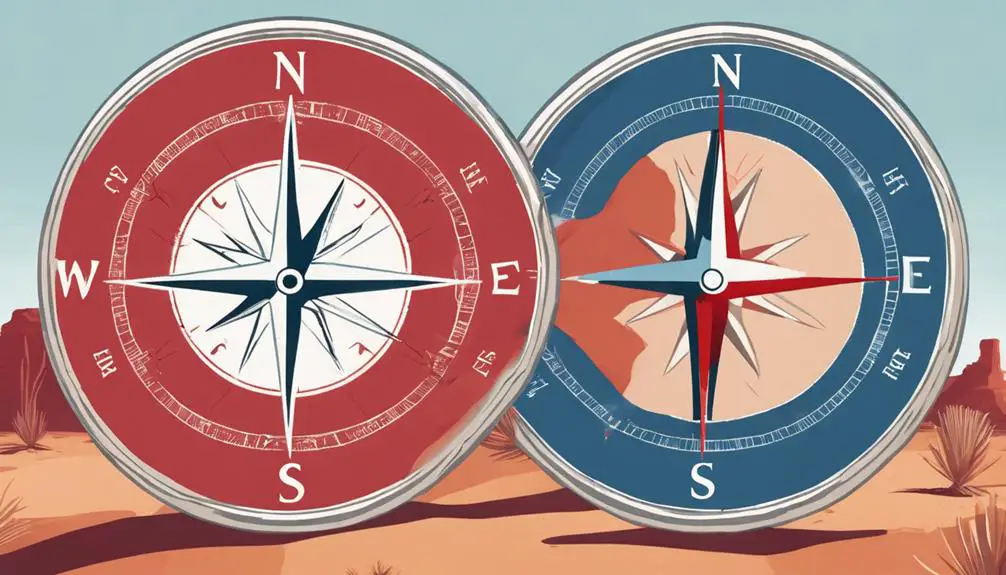
You'll often use azimuths to pinpoint your exact location or direction of movement, which is important for navigation and coordination with your team. An azimuth is a directional angle measured clockwise from north, ranging from 0 to 360 degrees. Understanding azimuths is critical in military operations, as it enables you to determine your position and direction of movement.
When using azimuths, it's important to take into account magnetic variation, also known as declination. This refers to the difference between magnetic north and true north. To make a declination adjustment to your compass readings for accuracy, you'll need to be aware of the local magnetic variation.
Back azimuth is another significant concept in navigation. It's the opposite direction of your current azimuth, which helps you to retrace your steps or return to a previous location. By understanding azimuths and back azimuths, you'll be able to navigate efficiently and effectively, even in unfamiliar terrain.
Location References for Navigation

In military navigation, location references are essential for identifying and communicating specific points or areas, and they typically include geographic features, landmarks, or man-made structures that serve as recognizable reference points. These references help you to travel and orient yourself in unfamiliar terrain. You'll use them to determine your current location, plan routes, and identify potential hazards or obstacles.
When traversing, you'll rely on terrain association, which involves using natural features like hills, valleys, or bodies of water to guide you. This technique helps you to stay oriented and on course. Additionally, you'll need to estimate distances between locations, which requires practice and attention to detail. By combining location references with distance estimation, you'll be able to move efficiently and effectively through unknown terrain.
LRP and Patrol Base Operations

When you're conducting long-range reconnaissance patrols (LRPs) or establishing patrol bases, knowing how to set up a secure and concealed base of operations is vital to achieving your mission objectives. This requires careful planning, attention to detail, and adherence to strict security protocols. As the patrol leader, it's your responsibility to make certain the base is set up in a way that minimizes detection by the enemy.
Before establishing the base, you'll need to conduct a reconnaissance of the area to identify potential security risks. This includes identifying escape routes, natural surveillance points, and potential enemy avenues of approach. Once you've selected a suitable location, you'll need to set up a secure perimeter, establish communication protocols, and designate a radio telephone operator (RTO) to maintain contact with higher headquarters.
Use an RTO checklist to make sure all communication equipment is functioning properly and that you're within the designated comms window. Remember to maintain operational security by limiting radio transmissions and using secure communication protocols. By following these procedures, you can guarantee the security and success of your LRP or patrol base operation.
Designating Enemy Positions
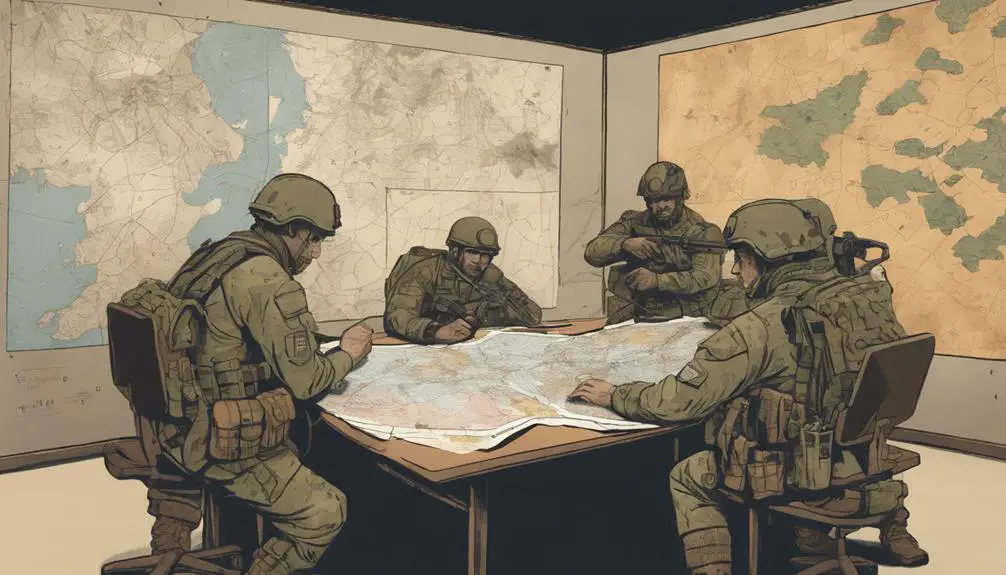
Five key factors determine the accuracy of designating enemy positions: observation, reporting, navigation, communication, and verification. You need to get these right to make sure that you're pinpointing the bad guys correctly. Observation involves using your senses to gather information about the enemy's location, movement, and activity. Reporting involves conveying this info back to HQ or other units in a clear and concise manner. Navigation is vital in determining your own location and the location of the enemy relative to your position. Communication is essential in ensuring that everyone is on the same page, and verification is necessary to confirm that the intel is accurate.
When conducting enemy surveillance, you'll often use tactical reconnaissance to gather information about the enemy's disposition, movement, and intentions. This involves using stealth and cunning to get close to the enemy without being detected. You might use advanced technology like drones or satellites to gather intel, or you might conduct boots-on-the-ground reconnaissance. Whatever the method, the goal is to gather accurate and timely information that will give you an edge on the battlefield. By mastering these skills, you'll be better equipped to designate enemy positions accurately and take the fight to the enemy.
Marking Friendly Positions Clearly
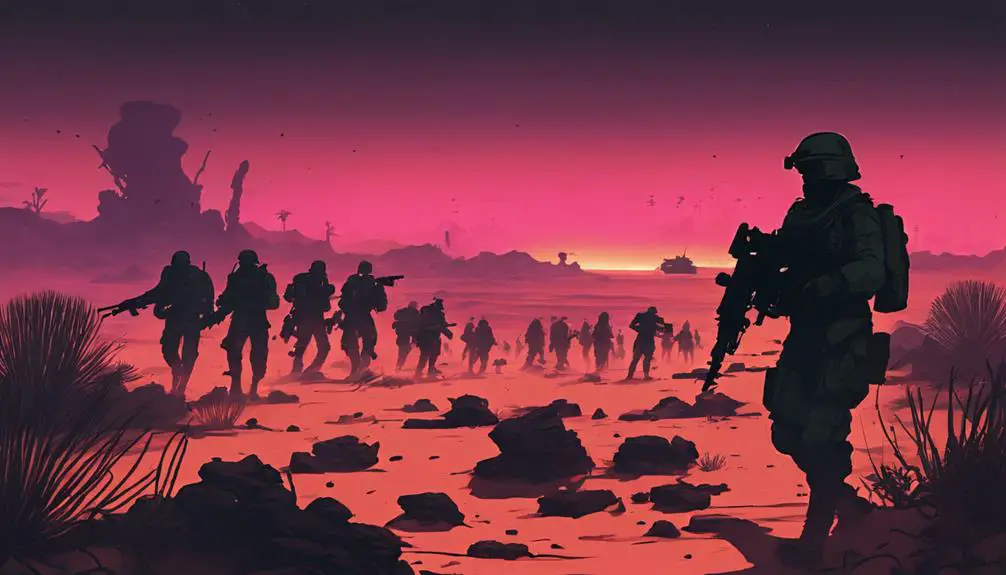
Marking friendly positions clearly is vital to avoid fratricide and guarantee a successful mission, so you'll want to make sure you're using the right signals and markers to identify your own troops. This includes using position markers, such as smoke, flares, or infrared beacons, to visibly mark your location. You'll also need to use standardized map symbols to indicate friendly positions on your maps and overlays. This guarantees that everyone on your team is on the same page and can easily identify where your troops are located.
When marking friendly positions, it's essential to use standardized symbols and markers to avoid confusion. For example, a blue 'F' on a map typically indicates a friendly position, while a red 'E' indicates an enemy position. By using these standardized symbols and markers, you can quickly and accurately communicate the location of your troops to other units and command centers. This clear communication is critical to mission success and can mean the difference between success and disaster.
Calling in Airstrikes and Firemissions
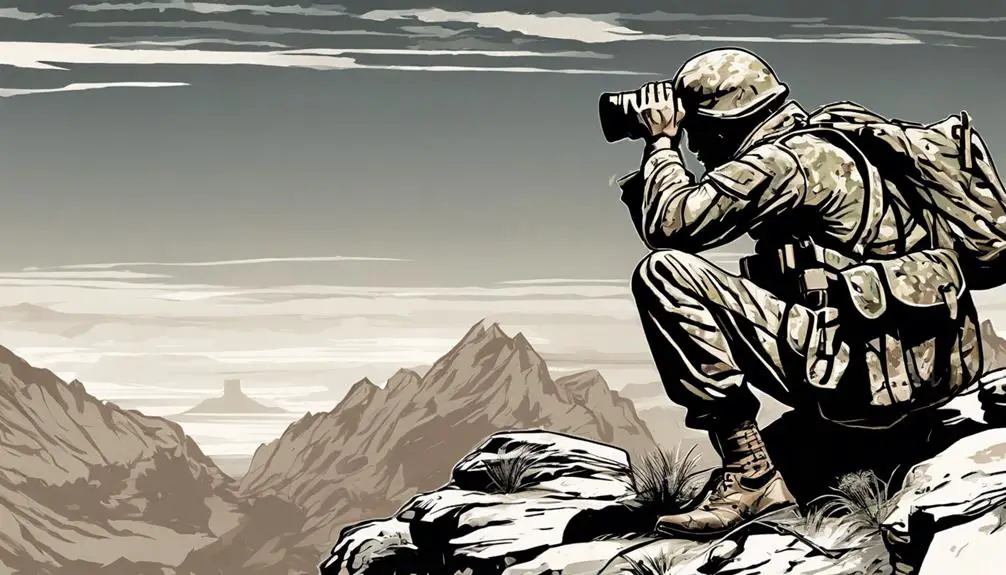
Precision is crucial when calling in airstrikes and firemissions, as one misplaced coordinate can have devastating consequences, so you'll need to be meticulous in your communication. When calling in an airstrike or firemission, you'll need to provide accurate coordinates, elevation, and direction of fire. Make sure to clearly identify the target, including its location, size, and any distinguishing features.
As part of the fire support team, your role is vital in guaranteeing the success of the mission. You'll need to provide a bomb damage assessment, which involves evaluating the effectiveness of the airstrike or firemission. This includes reporting on the damage inflicted, any casualties, and the impact on the target.
When communicating with air support, use clear and concise language, avoiding any ambiguity. Remember, one mistake can have catastrophic consequences. Stay focused, and ensure your communication is precise and accurate. Your attention to detail can make the difference between success and failure.
Frequently Asked Questions
How Do I Convert GPS Coordinates to Military Grid Coordinates?
You're lost in a sea of coordinates, searching for a lifeline to guide you through the conversion process. Fear not, navigator! To convert GPS coordinates to military grid coordinates, you'll need to understand the basics of coordinate systems. Utilize GPS conversion tools, like the Army's GeoCalc or online converters, to effortlessly switch between latitude/longitude and Military Grid Reference System (MGRS) coordinates.
What Is the Difference Between a Checkpoint and a Rally Point?
When you're operating in a tactical environment, it's important to understand the difference between a checkpoint and a rally point. A checkpoint is a designated location where you'll stop to perform a specific task, like conducting a security sweep or regrouping. A rally point, on the other hand, is a secure perimeter where you'll assemble with your team, typically during a tactical assembly, to reassess the situation and adjust your plan if needed.
Can I Use Civilian Maps for Military Navigation Purposes?
"Cut to the chase," you're wondering if civilian maps are reliable for military navigation. The answer is, it depends. While civilian maps can provide a general idea of the terrain, their accuracy might not meet military standards. Civilian limitations, such as outdated information or incomplete data, can be critical in high-stress situations. You need reliable map accuracy to execute your mission effectively. Relying solely on civilian maps might put you and your team at risk.
How Do I Report My Location to Command Using Radio Communication?
When reporting your location to command using radio communication, follow proper radio protocol. Identify yourself with your call sign, then clearly state your location using grid coordinates or a recognizable landmark. Use a standardized format, such as 'This is Bravo-1-1, location is 345678, over.' Guarantee your transmission is loud and clear, avoiding static or background noise. Remember to wait for acknowledgement before continuing.
Are There Any Location-Specific Slang Terms Used in Urban Warfare?
In urban warfare, you'll use specific slang terms to report your location. Urban anchor points, like prominent buildings or landmarks, help identify your position. Street corner designations, like "Alpha-1" or "Bravo-3", pinpoint your exact location at an intersection. These terms are essential in urban warfare, where navigation can be complex. By using these terms, you'll quickly and accurately communicate your location to command.







